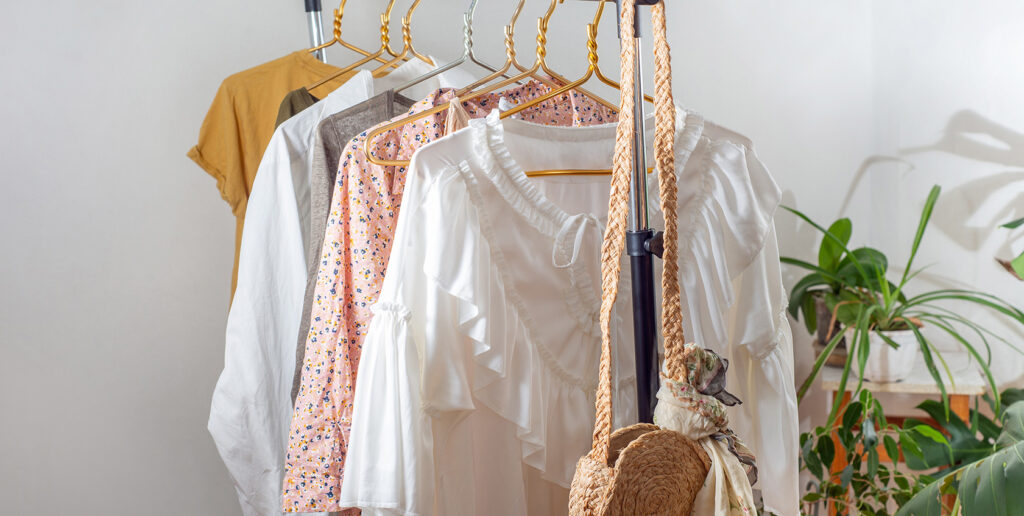The fashion and textile industry is the second most polluting industry in the world. This is owed to the concept and materialization of fast fashion, which emerged over 20 years ago, when clothes became cheaper and trend cycles accelerated, giving way to new models in a very short time. This causes, among other things, the waste of many articles of clothing—and only those that we purchase, as some well-known fashion brands burn many tons of unsold garments every year. All of this causes enormous pollution.
Another big problem generated by the fashion and textile industry is the employment situation for many people. The bulk of the clothing business is in design and distribution, but the working conditions for those who make our clothes are often outrageous and inhumane. News reports of worker deaths in textile workshops in places like Tangier, where rain floods the basements where they work and cause short circuits, are not uncommon.
Just ten years ago, in 2013, 1,134 people died due to the collapse of Rana Plaza in Bangladesh. Citizen pressure managed to open an international debate and some clothing multinationals reacted. Since then, a little progress has been made in the control and audits of supplier companies in southern countries, but there is still a long way to go regarding the labor rights of textile workers, the vast majority of whom are women.
All of this is forcing us to make urgent changes in the processes, materials, and marketing of the entire industry. Regardless of whether you are generation Z, millennial, generation X, or boomer, slow fashion should be part of your lifestyle at this point, and a good way to incorporate it is to opt for sustainable, ethical clothing that, beyond trends, is respectful of the environment and those who make it.
Slow fashion proposes a slowdown, reducing excessive production and consumption of fast fashion, in an effort to reduce the pollution generated by this industry, allowing each member of the value chain to carry out their duties ethically and responsibly, considering both the impact on the environment and the human impact. For this reason, slow fashion is usually comfortable and functional clothing that you can use for many years.
What is slow fashion?
Slow fashion is a recent trend that seeks balance and sustainability in garments and accessories. It is a production system that emerged in response to fast fashion. It seeks to highlight the value and importance of quality, the selection of material with which clothing is made, which should be sustainable, long-lasting, and eco-friendly. Sustainable fashion brands seek quality in their garments, which is why most of their clothes are timeless garments that avoid observing passing trends. This way you can have an exclusive slow fashion wardrobe with just a few pieces made in fair trade and outside of mass production.
How do you know what brands produce slow fashion?
Slow fashion has several characteristics (the origin of the materials, the number of garments produced, the cost), so finding a brand that is 100% slow fashion is complicated. But we recommend you look for three things:
- Production of a select few garments from the same collection.
- Sustainable production of textiles with sustainable material, free of polluting dyes and with organic fibers that make them suitable for composting and biodegradation.
- Few points of sale, with focus on local commerce.
- Ethical and environmental certifications and the use of recycled material.
Advantages of slow fashion
- A lifestyle focused on sustainability
- Fair use of resources
- Reducing your consumption
- Your clothes, accessories, etc. will last longer
- Design quality and details
- Most are unique garments

Disadvantages of slow fashion
- Higher prices when compared to fast fashion prices
Slow fashion basics
If you want to go slow fashion and significantly reduce your carbon footprint, remember that both the brand and designer must take the following points into account:
- The quality and durability of the clothing
- Slowing down production times and replacement of garments
- That workers receive a fair wage
- Reducing the carbon footprint generated by each garment
- Trying to generate zero waste as a brand
- Make bounded and timeless clothing
There are more and more brands becoming conscious about sustainability, and they’re also becoming easier to find because many include this data in their communication materials. Sustainable fashion is here to stay, thanks to the habits of many who, like you, are looking for a way to create a healthier and more just world.





